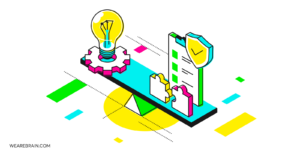The importance of customer development

By Sergey Prihodko, CTO at clevergig.
Customer development is a revolutionary methodology for creating and building startups and new corporate ventures. It forms one of three essential components of a Lean Startup, together with business model design and agile engineering. The customer development method was created by pioneer of the Lean Startup movement and successful entrepreneur-turned-educator, Steve Blank.
During his fruitful tenure as a Silicon Valley serial entrepreneur, Blank came to realise that startups, by their very nature, should not be diminutive versions of larger companies and should therefore think and act differently in their approach. He asserted that entrepreneurs must formulate a system to guide their search for ‘repeatable and scalable business models’.
The customer development methods suggests that startups often base their business models on untested hypotheses which largely misreads their target audience — for instance who they are, what they want, how much they are willing to pay for it, etc. The method insists that all these driving factors behind developing a product or service are hypotheticals and in reality mean nothing, so entrepreneurs must go outside the office and test their theories out. Even today, after the Lean Startup movement has developed considerable traction, many startups build a business model on conjectures and assumptions and judge their product based on their own experiences — no facts, only hypotheses. But in reality, only consumers will help to understand whether their assumptions are correct or not. The customer development model insists more time be spent in the field identifying potential consumers and learning how to better meet their needs.
Based on this principle, Blank created a step-by-step model aimed at minimising risk due to a lack of understanding of the market and consumers. Each step builds on the last.
1. Customer Discovery
Find out whether your hypotheses about your potential customers are correct and turn them into facts.
2. Customer Validation
Ascertain whether your resulting business model is repeatable and scalable.
3. Customer Creation
This is the start of execution. Create consumer demand to drive sales resulting in the scaling of your business.
4. Company Building
Transition from startup to company by following the tested business model. Here you can hire people to manage the business to allow time for the entrepreneurs to work on new ideas.
If one of these steps does not work, just go back to the previous step and repeat. Usually the first two steps are repeated several times until the business model starts working correctly.
Customer Development in Practice
The main tool in customer development is user interviews. Before the interview, it is important to formulate a hypothesis so that you can either confirm or disprove it. There are three types of interviews: interviews about the problem, the decision, and the value.
In the interview about a problem, ask open questions which focus on the problem only, not the solution. Do not try to sell your product — you need to know the problem and issues the user experience in order to identify the problem.
During the interview about the solution you already know the problem, so try to get your subject to describe the product. It is important to hear the facts, not opinions or assessments. Do not hesitate to ask the question ‘why?’.
Interviews about the value are usually carried out after the product is launched. So the aim is to understand how to make your product or service sell more. But do not confuse value and price. Value is the importance, relevance, utility and usefulness of something. Significance and utility will differ from person to person as they are subjective assessments of specific properties.
If it’s easier, think of it this way, values are what we consider important, these are our internal quality of life criteria. Examples of values may not always be clearly verbalised. These are our own mental designs that filter events for us as important and unimportant, useful and harmful, necessary and unnecessary, right and wrong situations.
The common mistake many businesses make is the belief that the priority for users is price. In fact, for users what is more important is the value of the product, or, more precisely, that the value is rated higher than the price paid — think the concept “good value for money”. Having said that too low of a price will make users question the quality of your product so make sure you find the sweet spot between the value added to the user, the price they would be willing to pay for that value and staying competitive.
Continue conducting interviews with your audience until you learn something new about your product or service in order to keep meeting the changing needs of your consumers.
Here are a few books to read if you want a deeper understanding of the topic:
- The Four Steps to the Epiphany — Steve Blank
This book inspired the customer development revolution.
- Lean Customer Development — Cindy Alvarez
A practical guide to implementing the principles of Lean Startup and customer development.
- The Lean Startup — Eric Ries
Lean Startup made a big contribution to Customer Development. Steve Blank called Eric Ries his ‘most successful student’ and this book managed to popularise Blank’s ideas.
Tanya Lyabik
Working Machines
An executive’s guide to AI and Intelligent Automation. Working Machines takes a look at how the renewed vigour for the development of Artificial Intelligence and Intelligent Automation technology has begun to change how businesses operate.







